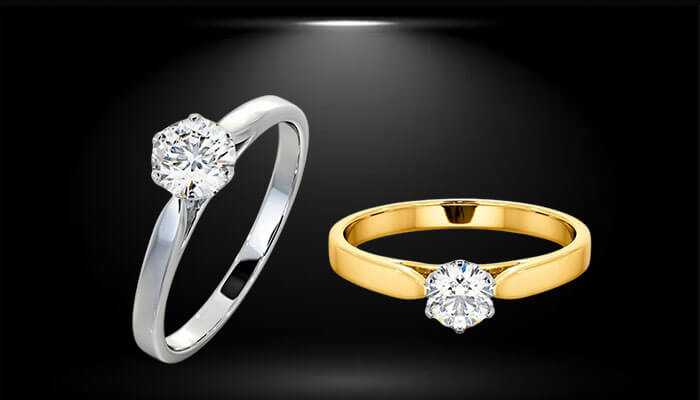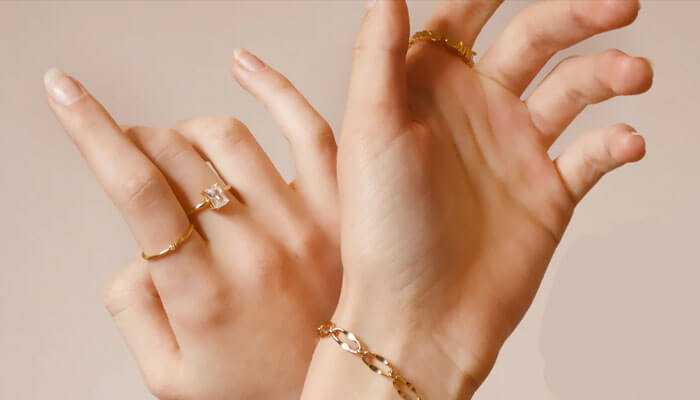When it comes to jewellery, gold is a timeless and versatile choice. Whether you’re shopping for an engagement ring, a wedding band, or a special piece to add to your collection, one of the first decisions you’ll need to make is the colour of the gold: white gold or yellow gold.
Each has unique characteristics and appeals, but how do you determine which suits you best? Here’s a guide to help you decide before browsing jewellery online.
Understanding the Basics
White Gold
White gold is an alloy of gold and white metals such as silver, palladium, or nickel. It is often coated with rhodium, which enhances its white appearance and adds a reflective quality. White gold is prized for its modern, sleek look and is a popular choice for engagement rings and wedding bands.
Yellow Gold
Yellow gold, on the other hand, is an alloy of gold mixed with metals such as copper and zinc. Its rich, warm hue is classic and timeless, often associated with traditional and vintage jewellery styles. Yellow gold is known for its bright and luxurious appearance.
Factors to Consider
Skin Tone
Your skin tone can play a significant role in determining which gold colour complements you best. Here’s a quick way to figure it out:
1. Cool Undertones: If you have cool undertones (pink or blue hues in your skin), white gold tends to enhance these tones, providing a striking contrast that can make your skin look more radiant.
2. Warm Undertones: If your skin has warm undertones (yellow or golden hues), yellow gold can complement and enhance the warmth of your complexion, adding a natural glow.
3. Neutral Undertones: Lucky you! If your skin has a neutral undertone, white and yellow gold will suit you well. You can choose based on your personal preference or the style of jewellery.
Personal Style
Consider your wardrobe and the types of metals you typically wear. White gold will blend seamlessly with your existing collection if you favour silver or platinum jewellery. Yellow gold might be the better choice if you prefer a more traditional or vintage look.
Maintenance and Durability
White gold, due to its rhodium plating, requires more maintenance to keep its bright appearance. The rhodium coating can wear off over time, necessitating re-plating. Yellow gold, less dependent on coatings, typically requires less upkeep, maintaining its lustre with regular polishing.
Occasion and Symbolism
Think about the occasion and the symbolism of the piece. Yellow gold is often associated with warmth, tradition, and timeless elegance, making it an excellent choice for heirloom pieces. White gold, with its modern and sophisticated appeal, might be perfect for contemporary designs and settings.
How to Test Before You Shop
Virtual Try-On Tools
Many jewellery websites offer virtual try-on tools that allow you to see how different metals look on your skin tone. This can be a fun and convenient way to explore your options from the comfort of your home.
Visit Multiple Stores
Don’t settle for the first store you visit. Different jewellers may have variations in their alloys, affecting the colour of the gold. Try on white and yellow gold pieces at multiple stores to see which one you prefer.
Seek Professional Advice
Jewellery consultants and gemologists can provide valuable insights based on their experience and knowledge. Don’t hesitate to ask their opinion on which gold colour suits you best.
Take Photos
When trying jewellery, take photos of yourself wearing white and yellow gold. Sometimes, seeing yourself in photos can give you a clearer idea of which metal looks better on you.
Conclusion
Choosing between white gold and yellow gold is a personal decision that depends on your skin tone, style preferences, and the intended use of the jewellery. Considering these factors and taking the time to try different options, you can confidently select the perfect piece that enhances your natural beauty and suits your style. Happy shopping!



